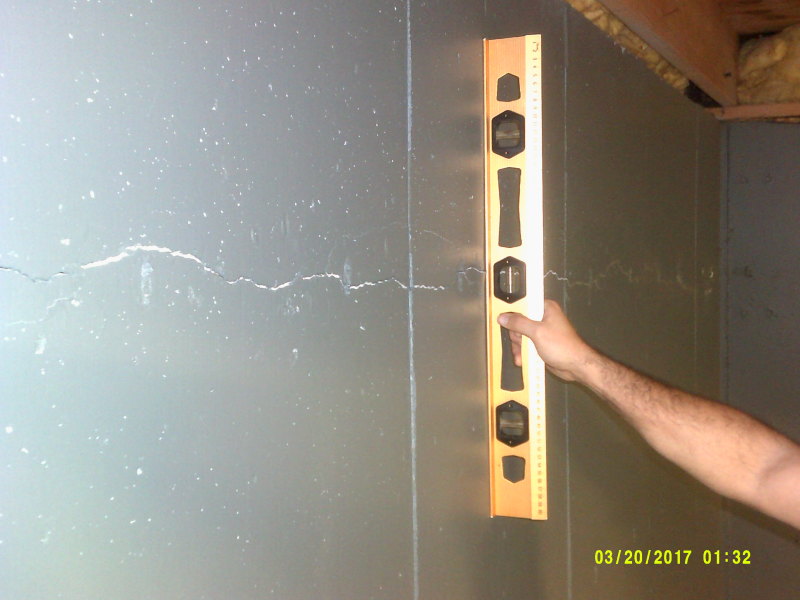DaveAtkins
Structural
- Apr 15, 2002
- 2,888

I have inspected numerous residential basements, but I observed something recently that has me puzzled. See the attached photo.
Normally, I see hairline, VERTICAL shrinkage cracks in basements. They are almost inevitable, and are rarely a concern. Horizontal cracks generally ARE a concern, because they usually indicate a flexural failure of the wall.
However, as you can see in the photo, the wall is not bowing inward. Also, the crack is located near the top of the wall, where one would presume the bending moment is less.
It doesn't appear to be a cold joint.
Any ideas?
DaveAtkins

